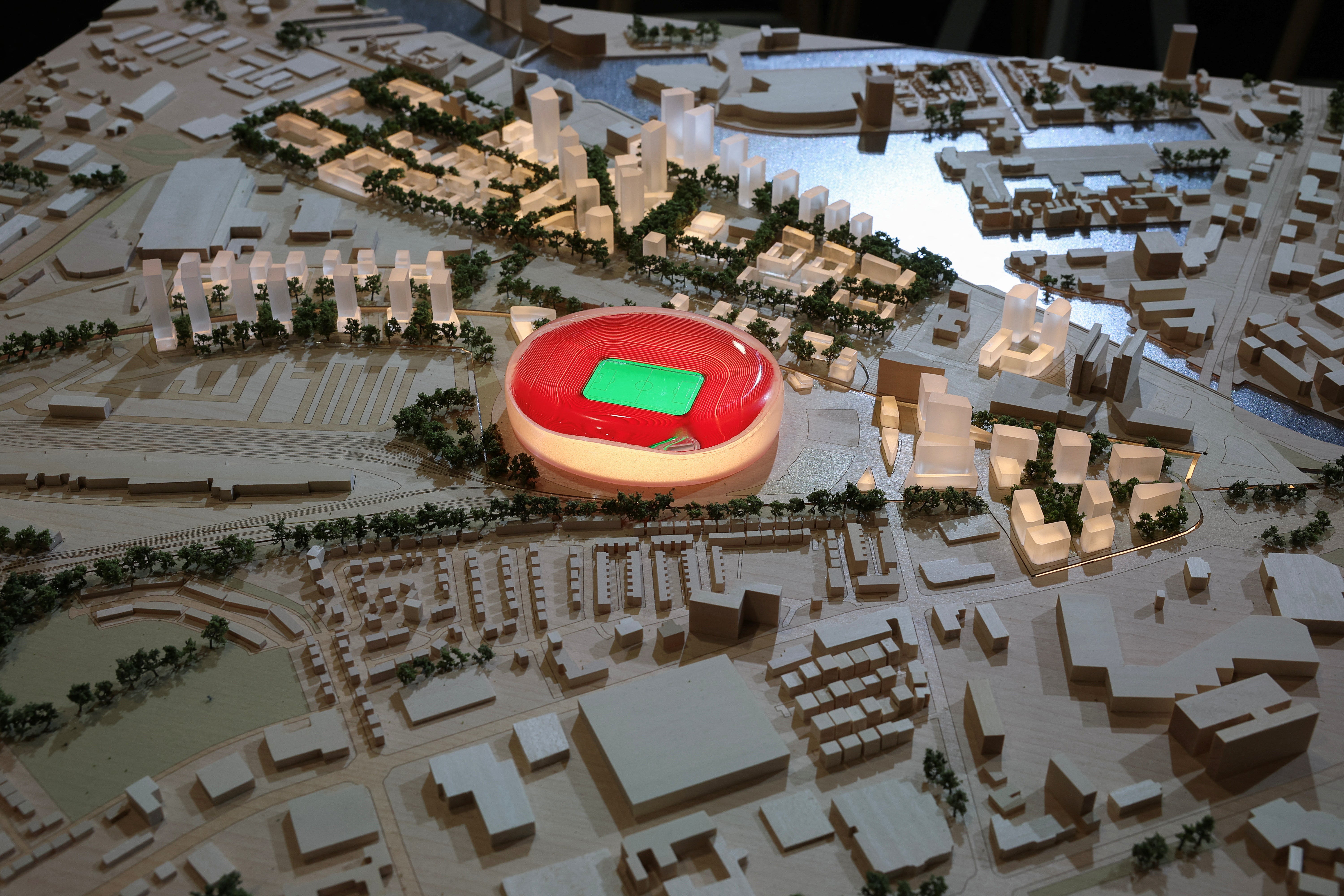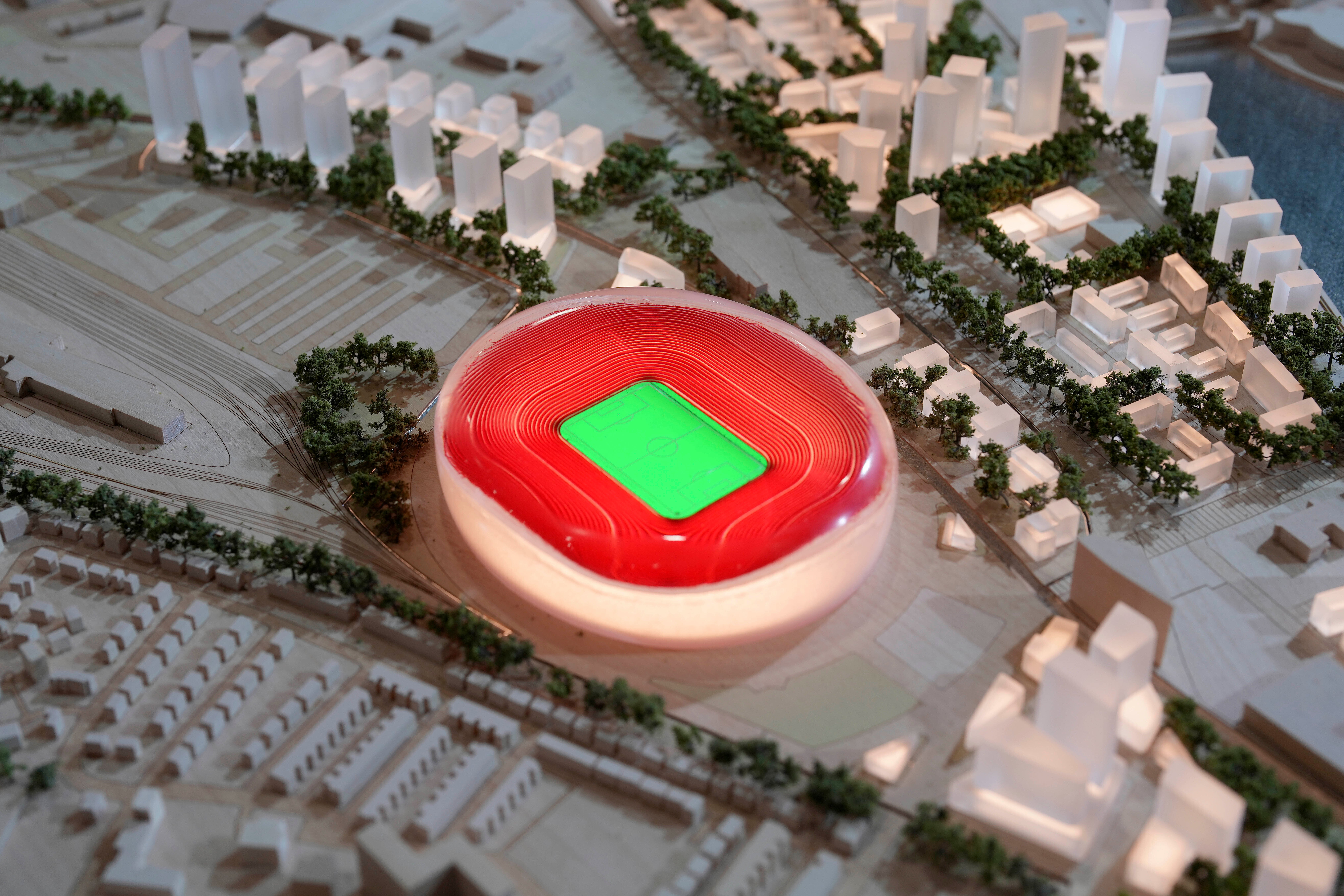First look of Manchester United’s regeneration plan emerges with new 100,000-seater stadium
Manchester United will make a decision over whether to redevelop Old Trafford or build a new stadium

Your support helps us to tell the story
From reproductive rights to climate change to Big Tech, The Independent is on the ground when the story is developing. Whether it's investigating the financials of Elon Musk's pro-Trump PAC or producing our latest documentary, 'The A Word', which shines a light on the American women fighting for reproductive rights, we know how important it is to parse out the facts from the messaging.
At such a critical moment in US history, we need reporters on the ground. Your donation allows us to keep sending journalists to speak to both sides of the story.
The Independent is trusted by Americans across the entire political spectrum. And unlike many other quality news outlets, we choose not to lock Americans out of our reporting and analysis with paywalls. We believe quality journalism should be available to everyone, paid for by those who can afford it.
Your support makes all the difference.A first glimpse of Manchester United’s proposed regeneration plan has been announced with a proposed 100,000-seater-stadium.
United co-owner Sir Jim Ratcliffe has previously expressed his desire to build a “Wembley of the north” for the side, but has to decide whether to redevelop Old Trafford, where the club have played since 1910, or build a new 100,000-seater stadium.
Old Trafford currently has a capacity of 74,310, and Ratcliffe has explored options since becoming the club’s largest individual stakeholder over how to develop the site. But the first conceptual plans for the new development have been released.
The mayor of Greater Manchester, Andy Burnham, said on Tuesday that no public money would be used on the redevelopment of the stadium, although he plans for a “mixed use” development including apartments, shopping centres and an increase of public transport.

Burnham told ITV: “It could be the catalyst for growth across the North West.
“This scheme could also bring benefits to the Liverpool City Region. They have plans for a major strategic rail interchange just off the M6 in St Helens. If we relocate the freight behind the current Old Trafford, that will help that scheme go forward.”
However, one of the biggest obstacles with the Old Trafford site is the freight rail terminal currently actively used behind the Sir Bobby Charlton stand, which would need to be relocated before any expansion on the current site can be built.
Should United either knock down the existing stadium and build a new one, or redevelop the ground bit by bit, they are likely to lose revenue in the process. Tottenham were able to use Wembley while they knocked down White Hart Lane to build their new stadium, but there is no similar alternative in Manchester.
The proposed regeneration of Trafford Park could boost the UK economy by up to £7.3 billion, according to global advisory firm, Oxford Economics, a project due to be spearheaded by Ratcliffe.
Join our commenting forum
Join thought-provoking conversations, follow other Independent readers and see their replies
Comments